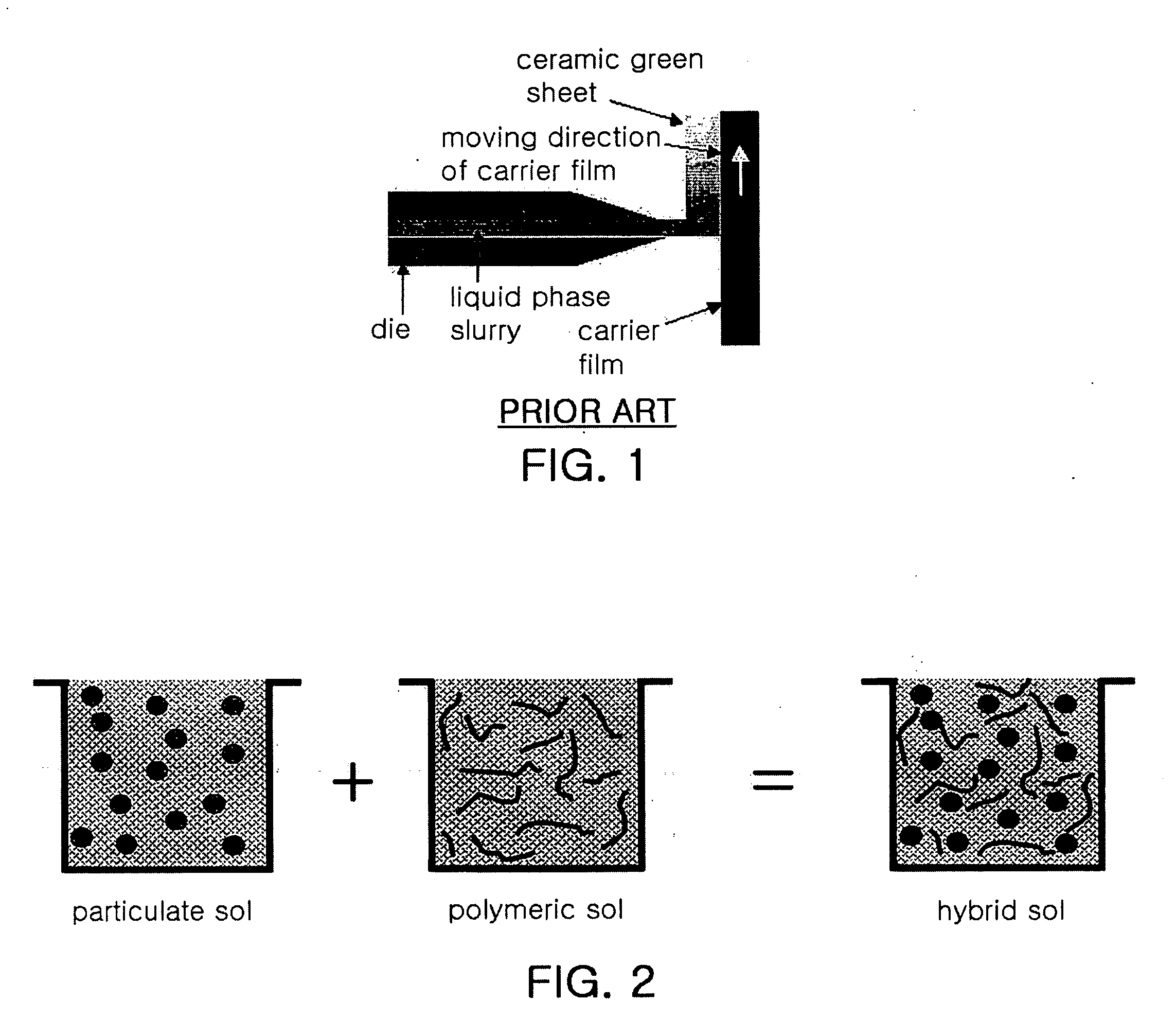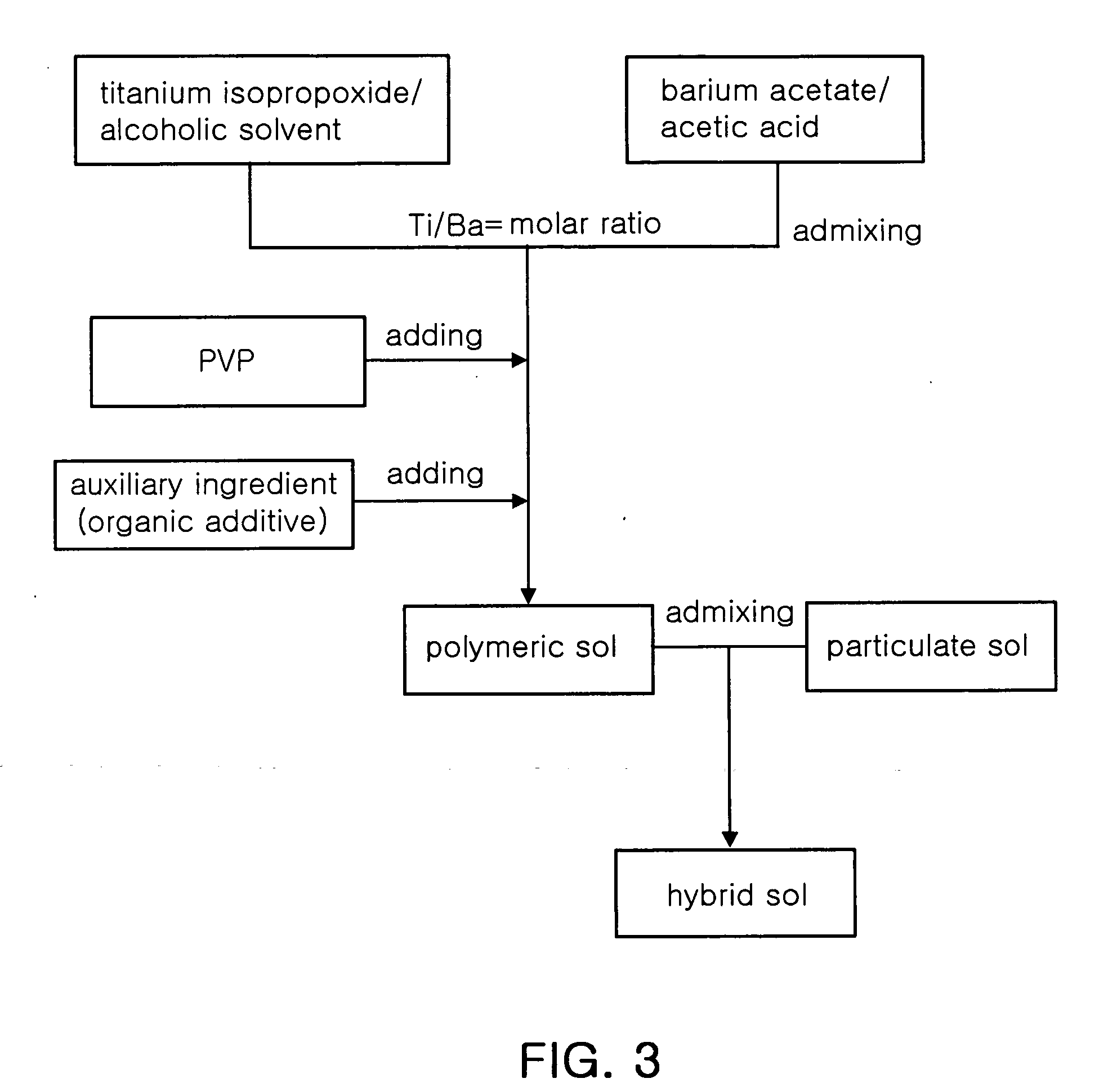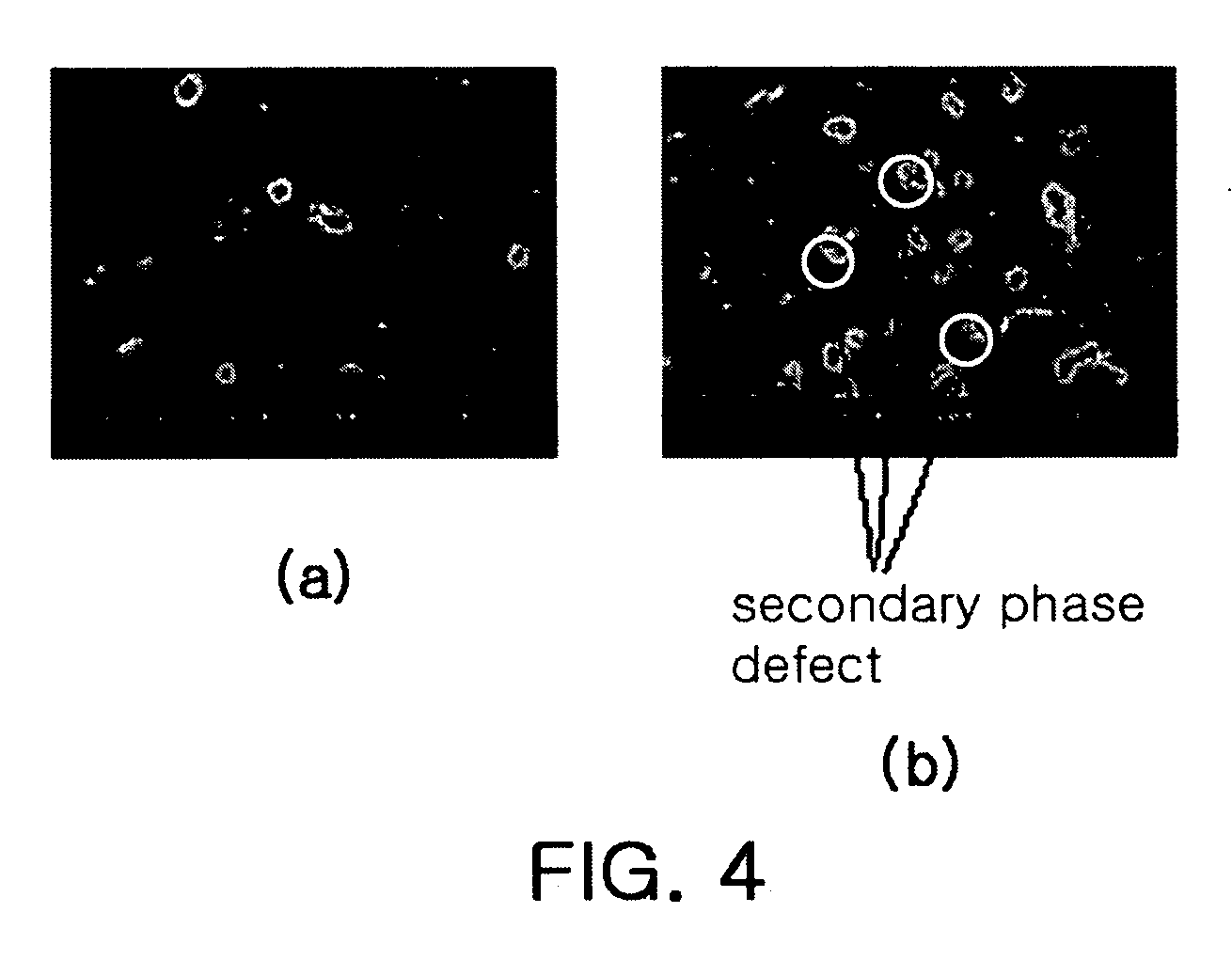Sol composition for dielectric ceramic, and dielectric ceramic and multilayered ceramic capacitor using the same
a technology of dielectric ceramic and composition, which is applied in the direction of natural mineral layered products, inorganic insulators, transportation and packaging, etc., can solve the problems of difficult to separate the green sheet from the carrier film, the technique of thinning a dielectric layer using a slurry process has reached its limit, and the effect of pillowing
- Summary
- Abstract
- Description
- Claims
- Application Information
AI Technical Summary
Benefits of technology
Problems solved by technology
Method used
Image
Examples
example 1
[0060] 1st Step: Preparation of Polymeric Sol
[0061] A titanium precursor solution was admixed with a barium precursor solution to obtain a molar ratio of 1:1 of Ti to Ba. The barium precursor solution was prepared by dissolving 2.34 g of barium acetate in 3.52 g of acetic acid, followed by being stirred, and the titanium precursor solution was prepared by adding 2.58 g of titanium isopropoxide to 20 g of 2-methoxy ethanol. The above two solutions were admixed while the barium acetate solution was added one droplet at a time to the titanium isopropoxide solution. Then, the resultant admixture was further mixed for 1 hour, after which acetylacetone as a reaction inhibitor was added to provide a pH of 4.3, so as to ensure the reaction stability. Further, 0.3 g of polyvinylpyrrolidone as a polymer material was added to the admixture, followed by being stirred for about 45 min, to obtain a desired polymeric sol.
[0062] 2nd Step: Preparation of Particulate Sol
[0063] 31.07 g of BaTiO3 po...
example 2
[0070] To the hybrid sol obtained in the inventive example of Example 1 of the present invention, 0.1403 g of manganese (II) acetate tetrahydrate, 0.8158 g of yttrium 2-ethylhexanoate and 0.0252 g of calcium acetate tetrahydrate were added, to manufacture a disc sample, which was then sintered at 1200° C. for 2 hours to obtain a dielectric body. Subsequently, outer electrodes were formed on the dielectric body. The dielectric body was measured for a sintered density, a dielectric constant and TCC characteristic, and was observed by an electron microscope. The values of sintered density and dielectric constant of the plurality of samples are averaged, and given in Table 2, below.
TABLE 2Sintered Density (Relative density %to BT Theoretical Density)Dielectric Constant95.42207
[0071] From the 10,000 and 50,000 magnifications from electron micrographs in FIGS. 6a and 6b, respectively, it can be shown that the samples according the present invention have uniform particulate growth and no...
PUM
| Property | Measurement | Unit |
|---|---|---|
| size | aaaaa | aaaaa |
| temperature | aaaaa | aaaaa |
| thickness | aaaaa | aaaaa |
Abstract
Description
Claims
Application Information
 Login to View More
Login to View More - R&D
- Intellectual Property
- Life Sciences
- Materials
- Tech Scout
- Unparalleled Data Quality
- Higher Quality Content
- 60% Fewer Hallucinations
Browse by: Latest US Patents, China's latest patents, Technical Efficacy Thesaurus, Application Domain, Technology Topic, Popular Technical Reports.
© 2025 PatSnap. All rights reserved.Legal|Privacy policy|Modern Slavery Act Transparency Statement|Sitemap|About US| Contact US: help@patsnap.com



